Talk with our local travel specialist who can help organize your trip.
Exploring Punakha, Bhutan: Travel Guide with Essential Tips!
The ancient capital of Bhutan, Punakha, is an exceptional travel destination with cultural and historical significance. From the iconic dzongs to the engaging festival of Punakha Tsechu and the unique fertility temple, this town offers unique experiences.
Located in the western region of Bhutan, Punakha draws thousands of tourists every year, excited to explore its natural beauty, historical sites, and religious monuments.
Read through the Punakha travel guide and essential tips to make your travel fulfilling and delightful.
Visa Requirements and Travel Permits
Prior to embarking on a journey to the Land of Thunder Dragon, Bhutan mandates the possession of a Bhutan Visa to its visitors. This visa is obligatory for all nationalities except those from India, Maldives, or Bangladesh, who receive an entry permit upon arrival (THEY WILL ALSO NEED TO OBTAIN PERMIT PRIOR TO ARRIVAL)
Licensed Bhutanese tour operators oversee the entire online visa application process.
It's important to note that Bhutan requires that every tourist must be accompanied by a registered guide and travel in a private vehicle, both of which are managed by the authorized tour operator.
To arrange your travel, your tour operator will ask you for specific documents, including:
- Passport-sized photos
- Personal details and necessary information to fill out the online visa application form
- Valid travel insurance for the duration of travel
- Copy of a passport that has a minimum six months validity from the intended date of departure from Bhutan
- Detailed travel itinerary and pre-booking information (for example, a voucher as confirmation of hotel booking in PARO OR THIMOHU) with the designated tour operator
The fee for the visa application is USD 40 and is issued by The Department of Immigration, which might take up to 5 business days. The tour operator will provide you with the visa before your arrival in Bhutan. Upon reaching Paro International Airport, immigration officials will inspect it at the immigration counter.
In addition, tourists must pay a Sustainable Development Fee (SDF) amounting to $200 per night.
Notably, the Bhutan government announced a 50 percent discount on the prevailing SDF of USD 200 for US dollar-paying tourists visiting the country.
Another change is the 50 percent discount on the SDF rates applied to children aged between 6 and 12 years for US dollar-paying children visiting as tourists.
The new incentives will come into effect from September 1 and will remain effective until August 31, 2027.
However, individuals from India, Maldives, or Bangladesh, though exempt from the visa requirement, are subject to a distinct SDF fee OF INR 1200 PER NIGHT.
Reaching Punakha and local transportation
To reach Punakha, you need to first reach Paro, then drive to Thimpu, and then Punakha. This is because there are no direct international or domestic flights to Punakha.
- Reaching Paro: You can reach Paro via land by entering any of the three border stations in India: two in Assam and one at Jaigaon-Phuentsholing in West Bengal. As an alternative, you can take a direct flight to the only international airport in Bhutan, the Paro International Airport. Airliners like Druk Air and Bhutan Airlines have daily connecting flights from destinations like Delhi (India), Kathmandu (Nepal), Thailand, Singapore, Dhaka, Guwahati and Bagdogra (India).
- Reaching Punakha: From Paro International Airport, you need to take a drive to Punakha via the main highway. Along the way, you will pass Thimpu, the present capital of Bhutan. In total, the distance from Paro Internal Aiprort is 120 km, which takes close to 4 hours to reach.
Inside Punakha for transportation, you can use local buses or taxis for travel.
It is advised to travel in taxis because there is less crowd and it is more convenient, unlike local buses that have irregular schedules and are crowded. The other best alternative is to ask your travel agency to manage a private vehicle, which will cost some money.
Featured Trips
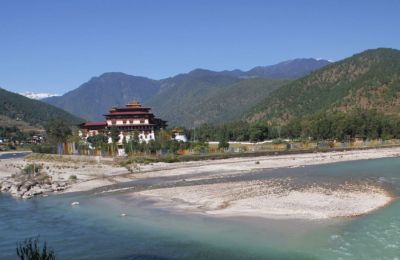
Bhutan Cultural Tour - 5 days
Bhutan Cultural Tour of 5 days lets you discover the rich Bhutanese culture. Visit ancient fortresses and Taktsang Monastery. Enjoy traditional hot stone bath.
Inquire NowWhere to travel next?
Get help from our travel specialists for holiday ideas that matches your interests.
Places to visit
There are many things to do in Punakha, including visits to monasteries and dzongs, interacting with locals, immersing in their religion, history, and culture, or escaping into nature. Punakha has many unique places in store for tourists, some of which are mentioned below:
Punakha Dzong
Bhutan's second oldest iconic fortress-monastery, Punakha Dzong, sits at the confluence of the Pho Chhu (Father River) and Mo Chhu (Mother River). The fortress served as a seat of the government until the 1950s and now it is the winter residence of Je Khenpo, chief of Bhutan. Now, it draws thousands of visitors due to the stunning architecture and intricate woodwork.
You can stroll around the serene courtyards, look at the amazing architecture, and understand more about the heritage and history of Bhutan. If you happen to be at the Dzong in February or March, you will also get to observe the Punakha Tsechu and Punakha Darbuchen festivals.
Chimi Lhakhang

Known also as the "Temple of Fertility," Chimi Lhakhang is a uniquely charming temple situated amidst the rice fields near Lobesa. This is a must-visit place in Punakha as you will get to understand the uniqueness of the temple, which is dedicated to the Divine Madman, Drukpa Kunley.
Couples tend to visit this temple as its phallic symbols inside the temple premises celebrate fertility and offer blessings for childbirth. You can take a hike to the temple to learn about Bhutan's culture, beliefs, and traditions.
Khamsum Yulley Namgyal Chorten
Parched in the hills of Punakha, the Khamsum Yulley Namgyal Chorten is a beautiful chorten (stupa) overlooking the valley. It was built in the 1990s with intricate artistry. It was built to bring prosperity and peace to the Kingdom of Bhutan.
You need to visit this stupa for its peaceful surroundings and the surreal spiritual experience it offers. You can take a pleasant hike through the fields and forests to visit the chorten. After the hike, you can meditate in the vicinity as well.
Sangchhen Dorji Lhuendrup Nunnery
Another amazing place to visit is the Sagchhen Dorji Lhundrup Nunnery, which is perched on a ridge overlooking Punakha Valley. The nunnery focuses on spiritual practices, Buddhist education, and community service.
Tourists visit the nunnery to enjoy the amazing views of the valley and the serene atmosphere. You can witness the large bronze statue situated in the vicinity, built in 2008, which is known as Buddha of Compassion- Avalokiteshvara.
Suspension Bridge

One of the places to visit near the Punakha dzong is Bhutan's longest suspension bridge, which connects the main road to the nearby villages. One can simply view the flowing river and the amazing scene and also take photographs.
Punakha Ritsha Village
A silent and scenic Ritsha village is situated in the Punakha Valley, which shows the traditional rural life. This is one of the best ways to experience the local way of life where you interact with the villages.
It is a great way to experience the farming practices, lifestyle, and traditional Bhutanese architecture. You can hike up to the village by taking an off-beaten path.
Talo Village

Talo Village is another fascinating village near Punakha, which has amazing gardens and showcases the traditional Bhutanese lifestyle. Located at an altitude of 2800m, you can take the natural trail through alpine forests.
A fascinating place to visit in the village is Talo Sangnacholing Dzong, which was known to be the summer residence of the monastic body. You get to witness the beautiful terraced gardens with colorful flowers surrounding the Dzong.
Featured Trips

Bhutan Cultural Tour - 5 days
Bhutan Cultural Tour of 5 days lets you discover the rich Bhutanese culture. Visit ancient fortresses and Taktsang Monastery. Enjoy traditional hot stone bath.
Inquire NowWhere to travel next?
Get help from our travel specialists for holiday ideas that matches your interests.
Best Time to Visit
Spring (March to May) and autumn (September to November) seasons are the best to visit Punakha. The average temperatures during these months range from 10°C to 17°C. The pleasantries of these seasons include breathtaking mountain views, amazing flora, and the best road conditions in Punakha, all of which add to a lovely experience.
The months of March to May in spring bring temperatures from 2°C to 15°C. During this time, you will be able to attend the Punakha Tsechu festival in March. During the autumn season, lasting from September to November, the temperature ranges between 4°C to 15°C, perfect for outdoor activities.
The summer season, from June to August, is not the ideal time for travel due to the heavy rainfall causing slippery roads and less visibility. Temperature can also go up to 27°C.
The winter season from December to February witnesses temperatures from -4°C to 8°C, which can be very cold. Although the experience of traveling off-season might mean less crowd, the high altitude weather makes it more challenging, so winter is not the ideal season for a Punakha visit.
Travel costs and currency
The standard travel cost for the Punakha visit will cost a total of $250 to $350 per day per person, which includes accommodation, daily meals, a private vehicle, and a private tour guide. The accommodation at this price generally includes a stay in a 3-star hotel with decent furnishing and facilities.
During peak season, the cost may reach $300, while $200 is common in the off-season. Apart from this, you can carry some cash for your personal use and shopping. If you are going on a luxury tour and wish to stay in well-known hotels, then the cost ranges from $600 to $1000 per night per person.
The Bhutanese Ngultrum (BTN) is the official currency in Bhutan, so it is necessary to carry some cash for transactions with local vendors. Well-known hotels and businesses readily accept credit cards. Additionally, you can convert your currency into BTN at banks and authorized exchange centers in Punakha or Paro.
Internet and Mobile Connection
Communication has been made effortless in Bhutan by the comprehensive mobile network coverage of around 100%. However, the speed of the internet might depend on the terrain. Generally, wifi works really well in hotels and cafes.
A tourist can easily secure a prepaid SIM card from either of the two network companies - BMobile or Tashicell. You can either get in contact with the networks on your own and ask for a Tourist SIM, or you can ask your tour operator to manage this.
Usually, the operators manage a pre-activated 4G data plan for one month and provide it to you once you enter via Paro. On average, budgeting about $30 to $40 will cover a 7-day tourist SIM package.
Accommodation in Punakha
There are different options for accommodation in Punakha as it is a popular tourist destination. There are homestays such as Mendrelgang, which costs nearly $25 per night per person; then there are lodges like Gaselo Eco Lodge, which costs nearly $45 per night per person. Generally, these costs include decent furniture, shared eating spaces, hot water, and comfortable beds.
If you want to opt for a more luxurious option, then Dhensa Boutique Resort and The Four Boutique Hotel at $450 and $75, respectively, are better options. These hotels can have additional amenities like a spa, expensive interior, and personalized room service.
Food in Punakha
The culinary scene of Punakha is a great reflection of rich culture and ancient traditions, which are personalized with local produce. Indigenous ingredients like rice, cheese, and buckwheat are cultivated in higher elevations and, hence, are a part of most dishes.
Some of the iconic dishes of Punakha are the Doma snack made from betel nut wrapped in a leaf, the fiery blend of chilies and cheese in Ema Datshi, the creamy concoction of potato and cheese in Kewa Datshi, and more.
The best way to try this cuisine is to visit the local market and streets to encounter true taste.
Culture, traditions, and festivals of Punakha
The traditions and livelihood of Bhutanese are distinctly different from that of other communities. At Punakha, it is common to witness locals wearing authentic Gho-dress for men and Kira-attire for women, which are long, warm robes. The language predominantly spoken in Punakha is Dzongkha, but English is widely spoken.
Festivals are an integral part of the society in Punakha, with the most important being the Punakha Tsechu, honoring Guru Rinpoche's learnings through masked dances, rituals, and ceremonies. Another falling in February and March months is the Punakha Drubchen, which celebrates Bhutan's victory over Tibetan invaders.
Additional Tips
Preparing for your trip to Punakha involves considering the following tips to ensure a delightful and memorable journey:
- Organize Documents: Make sure to gather essential documents and permits and coordinate with your travel agent.
- Altitude and weather precautions: Punakha's elevation is around 1,200m, while some of the hillside Dzongs are situated at a higher altitude. So, pack layers and appropriate cool clothing.
- Cultural Respect: It is essential to adhere to local customs, like refraining from public displays of affection, removing shoes, and dressing modestly at religious sites. Before taking photos, seek permission.
- Environmental Consciousness: Bhutan is very serious about sustainability, so avoid single-use plastics and support eco-friendly practices and products.
- Health Precautions: Consult your doctor before traveling to Bhutan, ensuring necessary medication and vaccines. Be cautious when trying different spicy cuisine, and make sure to inform your tour operator about preexisting health conditions.
- Electricity: Consider carrying a universal adapter for your electronics, as Bhutan uses Type D, F, and G plug sockets and supports 230V.
- Tipping Etiquette: While tipping isn't customary in Punakha, it is a nice gesture, so feel free to tip at your discretion.
- Learn Local Phrases: It is always good to learn local phrases like "Kuzuzangpo la" (hello) and "Kadinche la" (thank you) to extend your connection with the locals.
- Written by: Naba Raj Amgai
Updated: Sep, 4, 2023

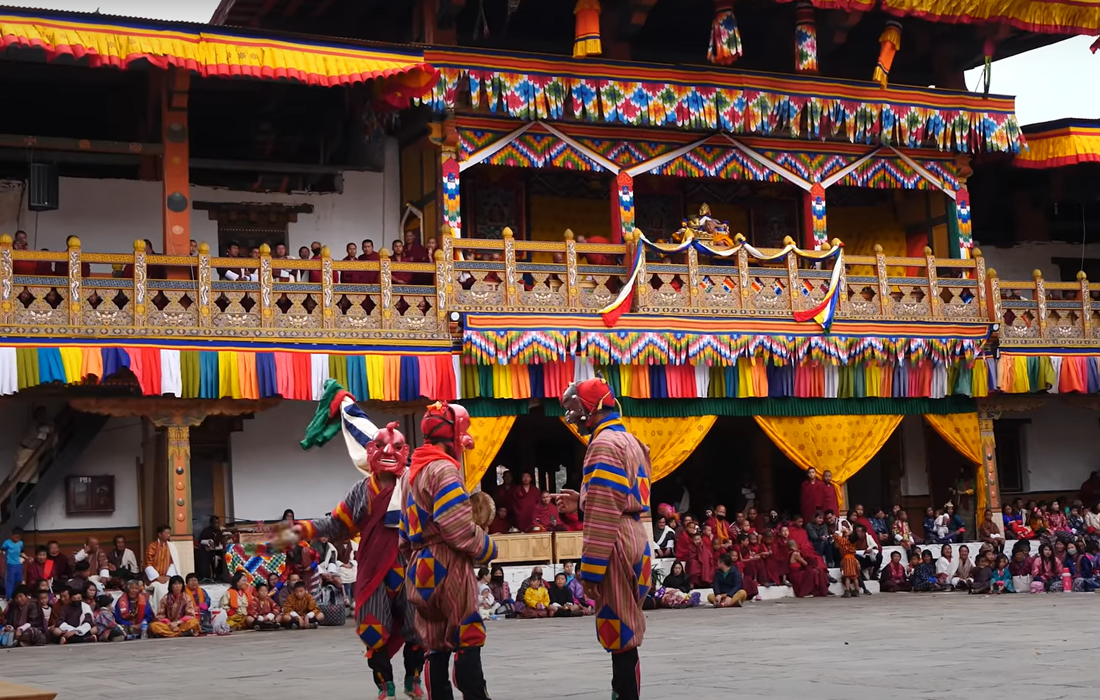

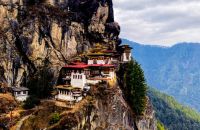
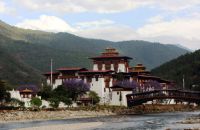
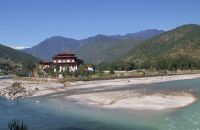

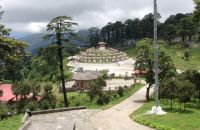





.jpegXkO.jpeg&width=200&height=130)









